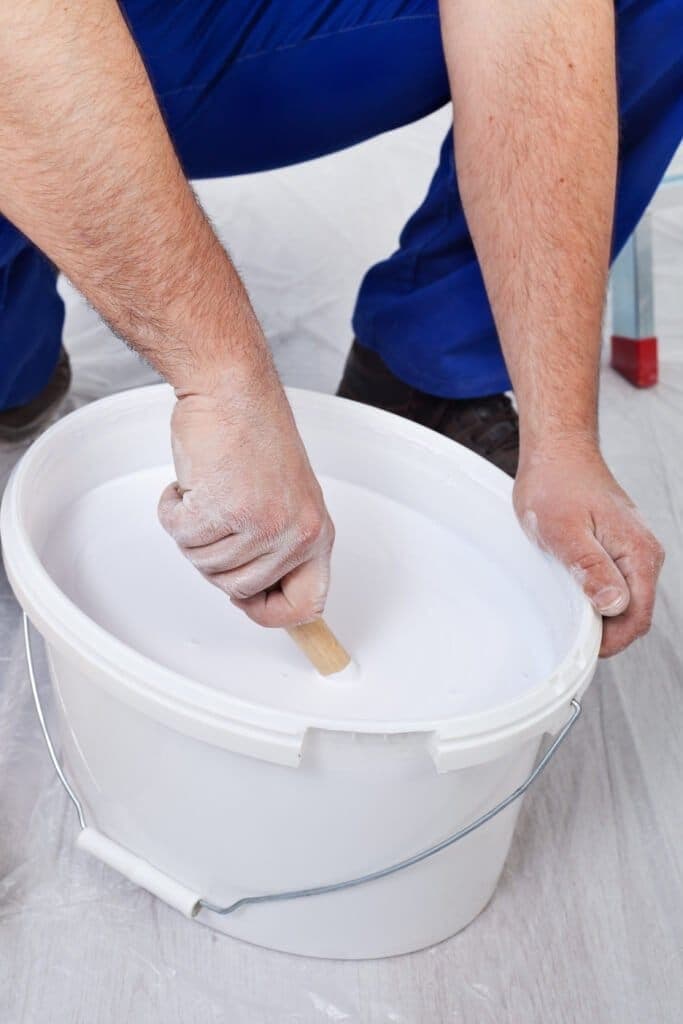
White wash is a low-cost paint made from a mixture of slaked lime or powdered chalk, size( Sares in Hindi ) and water which is used for whitening walls (brick walls, concrete walls, other wall surfaces etc.), etc. Sometimes pigments like fevicol are also added to it to make the walls colourful.
White wash is pure white and used as a protective coating for the external and internal finish which is applied directly to the brick or stone or plastered surfaces. When white wash mixed with colouring pigment such as the yellow earth is called a colour wash. It is applied on both exteriors as well as interior surfaces of the building. It is traditionally used for the interior in food preparation areas. They are generally recommended for low and medium class houses where ceilings are whitewashed and walls are usually colour washed.

Preparation of White Wash:
White wash is sometimes called “lime wash” and can be easily made by using water. Lime wash is a very ancient paint which is made from limestone.
Steps for preparation of whitewash are described below.
- White wash is prepared from the fat lime. The lime shall be slaked at the site and shall be mixed and stirred with about five liters of water for 1 kg of unslaked lime to make a thin cream.
- This thin cream shall be allowed to stand for a period of 24 hours and screened through a clean coarse and clean cloth.
- After this add 1 kg of gum dissolved in hot water. This Gum is mixed with one m3 of lime cream.
- After that 1.3 kg of sodium chloride is dissolved in hot water and added in every 10 kg of lime solution. The addition of sodium chloride in lime wash helps in quick carbonation of calcium hydroxide. Due to quick carbonation of calcium hydroxide, the coating surface will be hard and rub-resistant.
- A small quantity of ultra-marine blue shall be added to the last coats of whitewash solution and the whole solution shall be stirred thoroughly before use. Ultra marine blue is used as a paint pigment due to which the painted surfaces will have a blue tint of colour. These pigments used to differentiate the surfaces. i.e wall and ceiling surfaces.
- This is still widely used paint for low-cost houses. Many people now mix fevicol as glue. Earlier Size (Sares as popularly known in Hindi) was used as glue. In old days crude brushes of grass were used but nowadays good quality brushes are used. In spite of it one cannot get rid of brush marks on painted surfaces which will be very much visible unless there are skilled painters.
- The life of this paint is not more. In fact, you need to paint it almost every year or once in two years. It stains very easily as the finished surface is rough. It is not washable. It will also attract moisture soon.
- As it is prepared on site each batch prepared may have different colour tint and sticking property and hence unless the painters are highly skilled the variations in surface appearances are normal.
- As the paint is not very costly, it is always possible to apply one more coat if work is not satisfactory or even one coat during repainting will also do.
- Although it is known as whitewash you can add different colour pigments and can have a variety of colours.
Quality:
To check the quality of painted surfaces just rub your hand on the painted surface and if your hand or fingers become white, the paint quality is not good.
When you want to paint the whitewashed surfaces with oil or enamel paint in future it is very much necessary to remove the films of whitewash and sometimes it is hard and time-consuming to remove this.
New Surfaces:
When the house is new and the surfaces have yet not dried fully it is not advisable to paint with either oil paint or emulsion paint as it will peel off, in such cases if you still want to paint the house this is an easy and low-cost solution. At the end of one year, you can paint with whatever paint you may desire.
Also Read:
20 Different Types of Paints Used for Interior and Exterior Surfaces
Basic Components of Paint
White Cement Wall Putty, Acrylic Wall Putty and Plaster Of Paris (POP)































